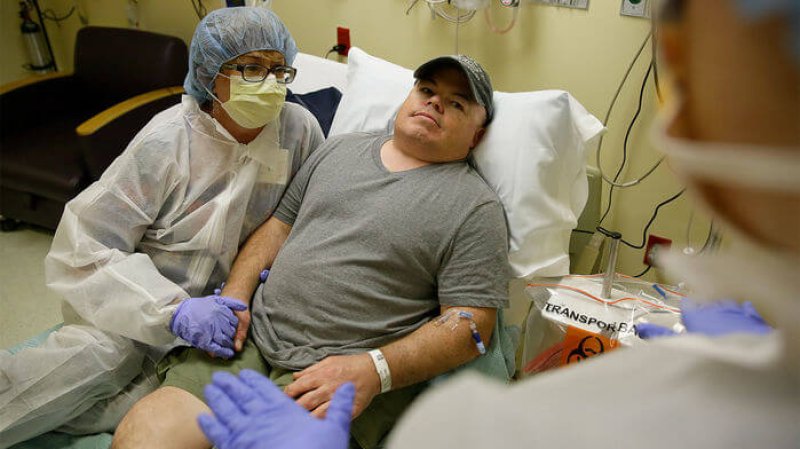Scientists for the first time have tried editing a gene inside the body in a bold attempt to permanently change a person’s DNA to cure a disease.
The experiment was done Monday in California on 44-year-old Brian Madeux. Through an IV, he received billions of copies of a corrective gene and a genetic tool to cut his DNA in a precise spot.
…
Signs of whether it’s working may come in a month; tests will show for sure in three months.
…
This time, the gene tinkering is happening in a precise way inside the body. It’s like sending a mini surgeon along to place the new gene in exactly the right location.
…
Fewer than 10,000 people worldwide have these metabolic diseases, partly because many die very young. Those with Madeux’s condition, Hunter syndrome , lack a gene that makes an enzyme that breaks down certain carbohydrates. These build up in cells and cause havoc throughout the body.
…
Weekly IV doses of the missing enzyme can ease some symptoms, but cost $100,000 to $400,000 a year and don’t prevent brain damage.
…
A gene-editing tool called CRISPR has gotten a lot of recent attention, but this study used a different one called zinc finger nucleases.
The GLP aggregated and excerpted this blog/article to reflect the diversity of news, opinion, and analysis. Read full, original post: AP Exclusive: US scientists try 1st gene editing in the body































